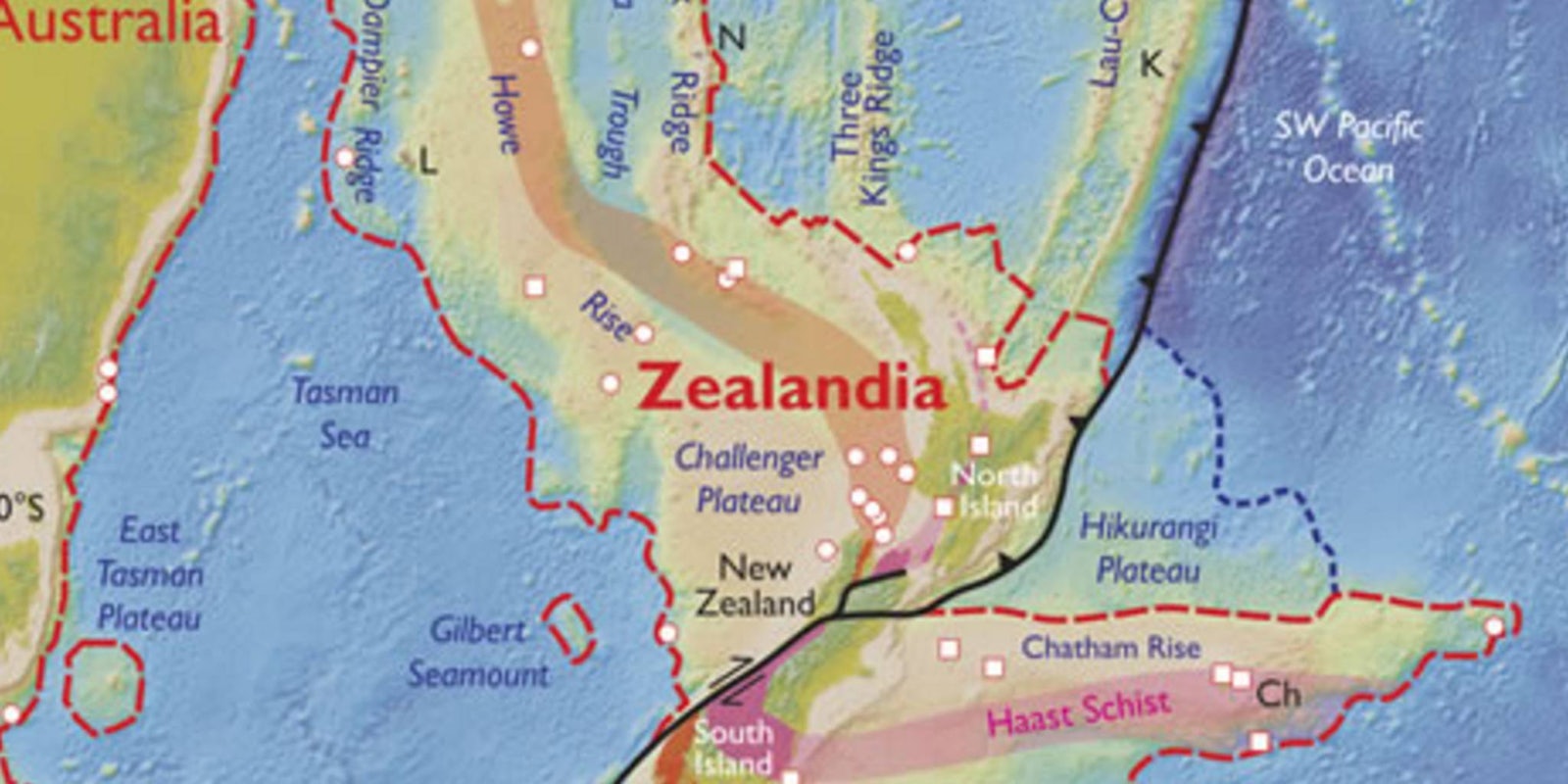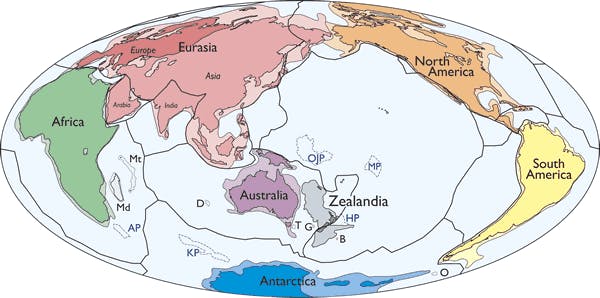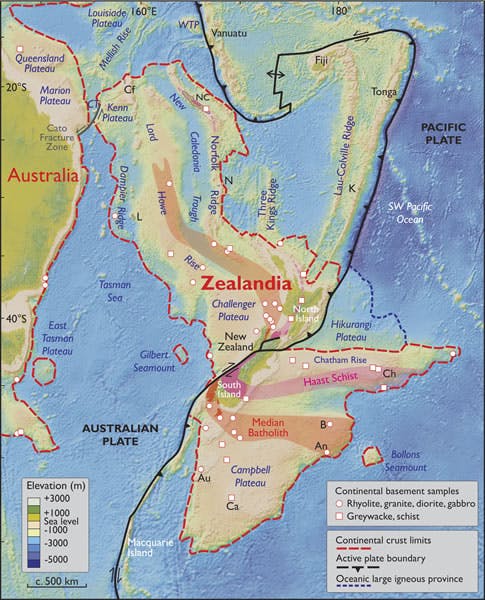How many continents are there? That’s the type of question that crops up on Are You Smarter Than a 5th Grader, but there’s a new answer now, according to a historic new report in the Geological Society of America (GSA).
According to 11 researchers, there’s actually an eighth continent on Earth, and it’s mostly hidden from view. Alas, it has nothing to do with the mythic lost city of Atlantis, but it should still be exciting for anyone intrigued by the world under the seas. The researchers named it Zealandia, and it’s comprised of a massive swath of continental crust hiding under the waters surrounding New Zealand.
The country of New Zealand sits atop the continental crust, as does the French territory of New Caledonia, poking out of the Southwest Pacific and providing a pretty sharp impression of how the entirety of the continent might look if the seas were lowered.
In describing their conclusions, the 11 scholars behind the report stated that the new continent is 94-percent submerged under the ocean and that classifying it as a continent “provides a fresh context” in which to examine the formation and movement of the continents.
Zealandia was formerly part of Gondwana. Today it is 94% submerged, mainly as a result of widespread Late Cretaceous crustal thinning preceding supercontinent breakup and consequent isostatic balance. The identification of Zealandia as a geological continent, rather than a collection of continental islands, fragments, and slices, more correctly represents the geology of this part of Earth. Zealandia provides a fresh context in which to investigate processes of continental rifting, thinning, and breakup.
According to the report, this isn’t a claim that could’ve been made as recently as a decade ago. “This is not a sudden discovery but a gradual realization,” it says. “As recently as 10 years ago we would not have had the accumulated data or confidence in interpretation to write this paper.”
It should come as no surprise that this latest development is drawing interest on social media. It’s akin to the conversation that erupted after Pluto was downgraded from a planet to a dwarf planet back in 2006. When it comes to our scientific understanding of the world and the cosmos, something as simple as a change in classification can really startle and/or excite people.
https://twitter.com/JordanDeanWill1/status/833348657063854082
https://twitter.com/curlsofmight_/status/833354103313035264
https://twitter.com/Purdicci/status/832617674383331328
The discovery of #Zealandia is so interesting! Despite the current state of political affairs, we live in exciting times. #sciencewins
— Emiliana Rae (@emirae0213) February 18, 2017
I think I may move to #Zealandia sometime in the near future.
— Britton McCain (@TheFirstBritton) February 18, 2017
Sadly, there won’t be any walking tours of the latest and most mysterious continent. To the contrary, anyone without a submarine will be sorely disappointed. But for anyone who lives in New Zealand or New Caledonia, it can be a new point of interest and pride. As it stands now, the combined population of the continent stands at an estimated 4,733,000, which amounts to about 0.06 percent of the global population.


